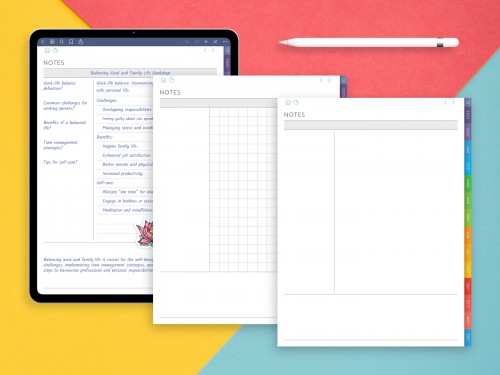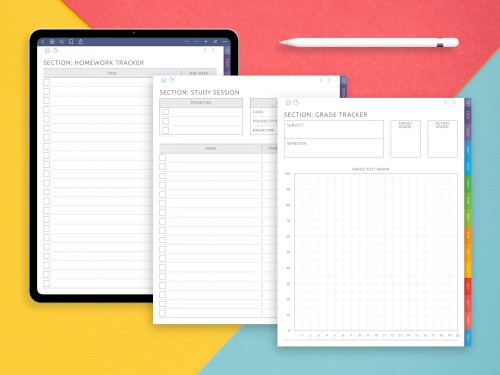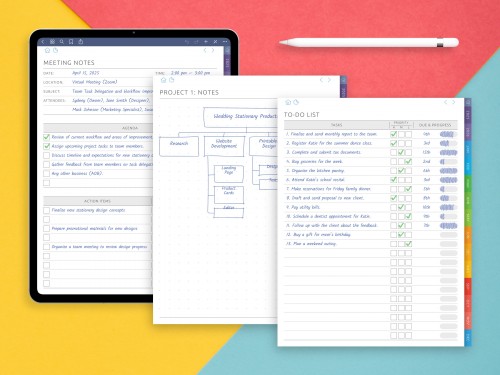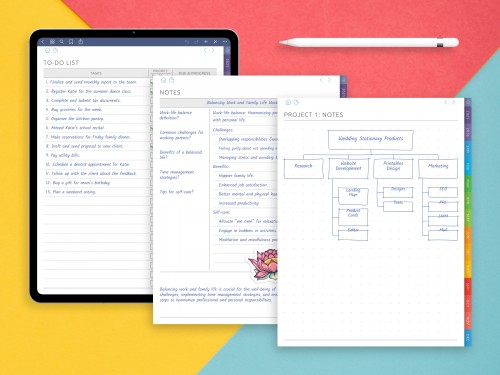The Best Note-Taking Methods for College Students & Serious Note-takers
In today’s fast-paced academic and professional world, having a reliable way to capture and organize information is essential. Whether you’re attending a lecture, collaborating in a seminar, or preparing a research report, note taking methods shape how well you learn, recall, and apply ideas. For university learners, selecting the most effective note-taking method can significantly enhance comprehension, retention, and overall productivity.
This guide reviews seven popular note-taking methods: Outline, Cornell, Boxing, Charting, Mapping, Zettelkasten, and Mind Mapping. Before comparing digital and handwritten approaches. By the end, you’ll have a grounded answer to the question, what is the best note-taking method, and a plan to adapt it for your major, schedule, and goals.
Method #1: The Outline Method
The Outline Method remains a staple among effective note taking methods because it is simple, structured, and scalable. You arrange content hierarchically with headings, subheadings, and bullet points to express a clear flow of ideas. It’s ideal for courses where professors present concepts in a logical sequence.
How it works
- Write main topics as top-level headings.
- Indent subordinate ideas, definitions, and examples beneath each heading.
- Break dense sentences into concise bullets that preserve the core claim.
Best for
History, biology, literature: any subject where lectures and readings follow a linear structure.
Pros
- Fast to learn; strong at reviewing before an exam.
- Supports organization and improves comprehension.
- Easy to convert into a study checklist for targeted revision.
Cons
- Less flexible for highly visual topics.
- Can hide relationships that are better shown as graphs or maps.
Tip: Pair the Outline with quick margin annotation to boost recall during review.
Best practices:
- Use abbreviations and symbols for speed.
- Keep indentation consistent.
Common mistakes:
- Overwriting every word the lecturer says.
- Not leaving space for later additions.
Example scenario: In a biology class, use it to list main systems (e.g., circulatory system) with indented bullet points for parts, functions, and key terms.
Method #2: The Cornell Method
The Cornell layout divides the page into a wide note column, a cue column for keywords and questions, and a bottom summary. It’s engineered for active learning and spaced revision, which is why many consider it the best note taking method for test prep.
How it works
- Capture ideas during class with examples and diagrams.
- Add prompts that trigger recall and self-quizzing.
- After class, synthesize the main points in your own words to deepen comprehension.
Why it works
- Builds active learning into your routine.
- Encourages concentration by separating capture from reflection.
- Generates a natural study sheet for efficient revision and retention.
Pros:
- Visually separates topics, making it easy to find the right block.
- Suitable for presentations, projects, and classes with many categories.
- Easily supplemented with colors and annotations to highlight key points.
Cons:
- Not convenient for fast-paced lectures.
- It can take up a lot of space on a page or in a notebook.
Analog fans can buy Cornell-ruled notebooks or print templates; digital users can mirror the layout in note apps and add quick annotations on slides.
Best practices:
- Fill in the summary immediately after the lecture.
- Keep cue questions concise.
Common mistakes:
- Skipping the summary section.
- Writing full sentences instead of keywords in the cue column of the Cornell Notes Template.
Example scenario: Law students preparing for finals can use Cornell to separate lecture notes from exam-relevant cues.
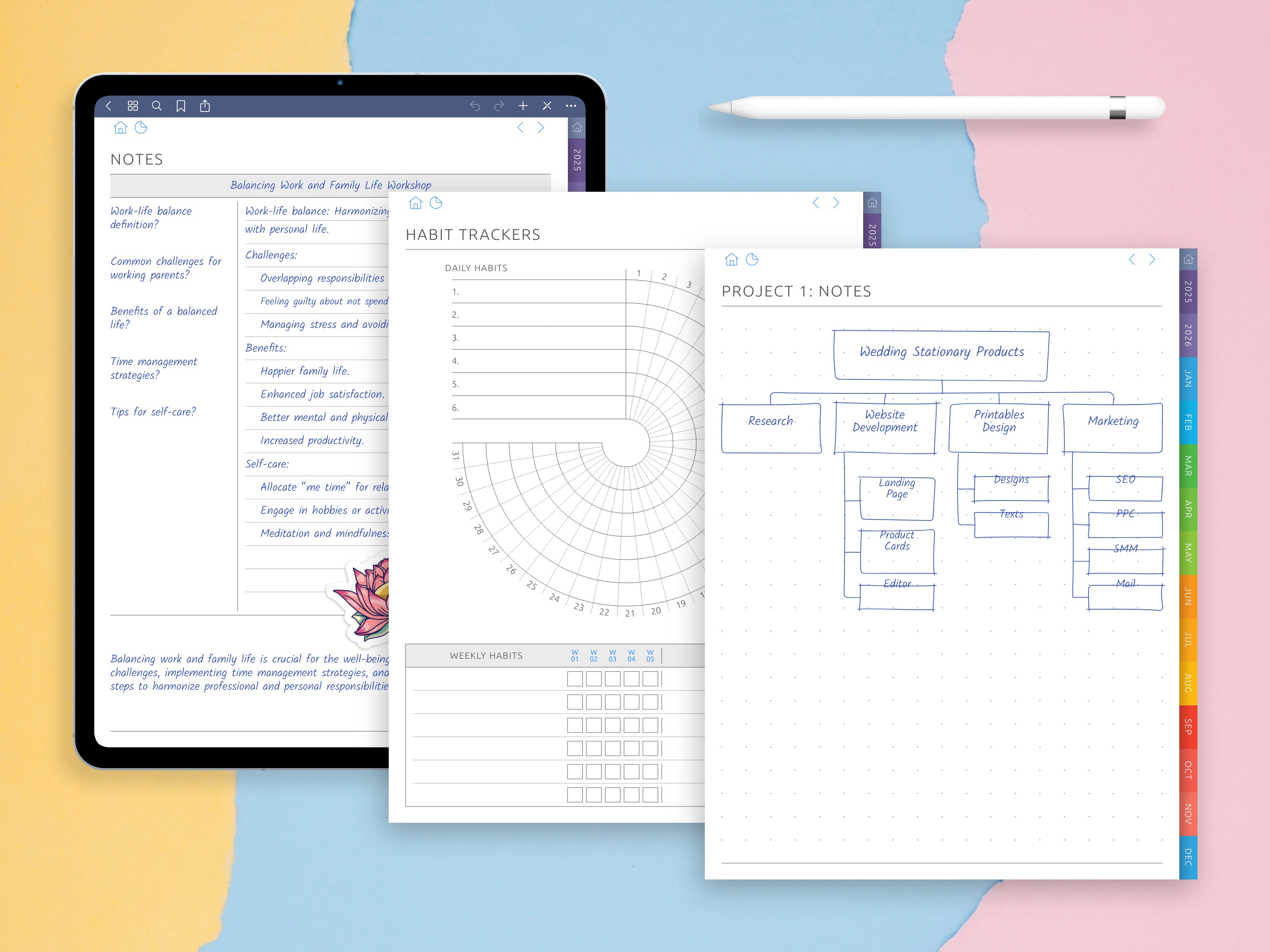
Method #3: The Boxing Method
With Boxing, you draw containers on the page and place related notes inside each box. Each box is a mini-topic is definition, model, case, formula, so scanning is effortless.
How it works:
- Draw boxes around related information.
- Each box represents a concept or topic.
- Arrange boxes for easy scanning.
Best for: Visual learners, design, marketing, and segmented topics.
Pros:
- Highly visual.
- Easy to scan during review.
- Works well with annotations.
Cons:
- Inefficient for fast lectures.
- Can waste space in notebooks.
Best practices:
- Color-code boxes by category.
- Keep each box focused on one topic.
Common mistakes:
- Overcrowding boxes with unrelated info.
- Not leaving room for connections between boxes.
Example scenario: In a marketing lecture, create separate boxes for “Target Audience,” “Messaging,” and “Budget.”
Method #4: The Charting Method
Charting organizes facts and comparisons into columns and rows is ideal for timelines, processes, frameworks, or experimental data.
How it works
- Define columns (e.g., term, concept, example, implication).
- Populate rows during or after class.
- Use it to highlight contrasts and relationships quickly.
Why students like it
It accelerates study before an exam, supports rapid comprehension, and complements quantitative or definition-heavy courses. Among different note taking methods, Charting is a powerhouse for clarity and efficiency.
Pros:
- Convenient for comparing and analyzing data.
- Easily sees differences and similarities between concepts.
- Helps with tests that require quick fact finding.
Cons:
- Requires prior knowledge of topic structure.
- Less effective for creative or discussion-based subjects.
Best practices:
- Prepare the chart before class.
- Keep columns consistent.
Common mistakes:
- Making too many columns.
- Not updating incomplete rows after class.
Example scenario: In history, compare revolutions by date, leaders, causes, and outcomes.
Method #5: The Mapping Method
Mapping resembles a branching flowchart. Starting from a central idea, you radiate outward into subtopics, then details, drawing arrows to show causal links. It’s superb for systems thinking.
Best for
Psychology, biology, and computer science: courses where relationships matter as much as definitions.
Benefits
- Encourages deep comprehension of how concepts interact.
- Boosts visual memory and helps with recall.
Because it’s highly structured visually, Mapping can unlock hidden connections that linear outlines sometimes hide.
Pros:
- Visually shows connections between ideas.
- Stimulates associative thinking and improves recall.
- Suitable for complex interdisciplinary topics.
Cons:
- Takes more time to format.
- It can be difficult for real-time note-taking.
Best practices:
- Use consistent shapes for main vs. subtopics.
- Limit branch depth to keep clarity.
Common mistakes:
- Adding too many disconnected elements.
- Neglecting to revise the map post-lecture.
Example scenario: In psychology, map the connections between memory, attention, and learning.
Method #6: The Zettelkasten Method
“Zettelkasten” (slip box) is a long-term knowledge system. Each atomic note has a unique ID, a single idea, and links to related notes. Over time, your network becomes a personal research engine.
How it works
- Create one card per idea, question, or claim.
- Write in your own words to improve retention and comprehension.
- Cross-link cards to surface emergent themes when writing papers.
Tools
Paper index cards or digital tools such as Obsidian (great for backlinks and quick annotation).
Pros:
- Creates a long-term knowledge base.
- Allows you to find unexpected connections between ideas.
- Integrates well with digital tools and annotations.
Cons:
- Requires discipline in maintaining and linking cards.
- It may be excessive for short courses.
Best practices:
- Keep one idea per slip.
- Link generously to other slips.
Common mistakes:
- Combining multiple ideas in one note.
- Failing to maintain links.
Example scenario: For a thesis, store and link quotes, data points, and theories across chapters.
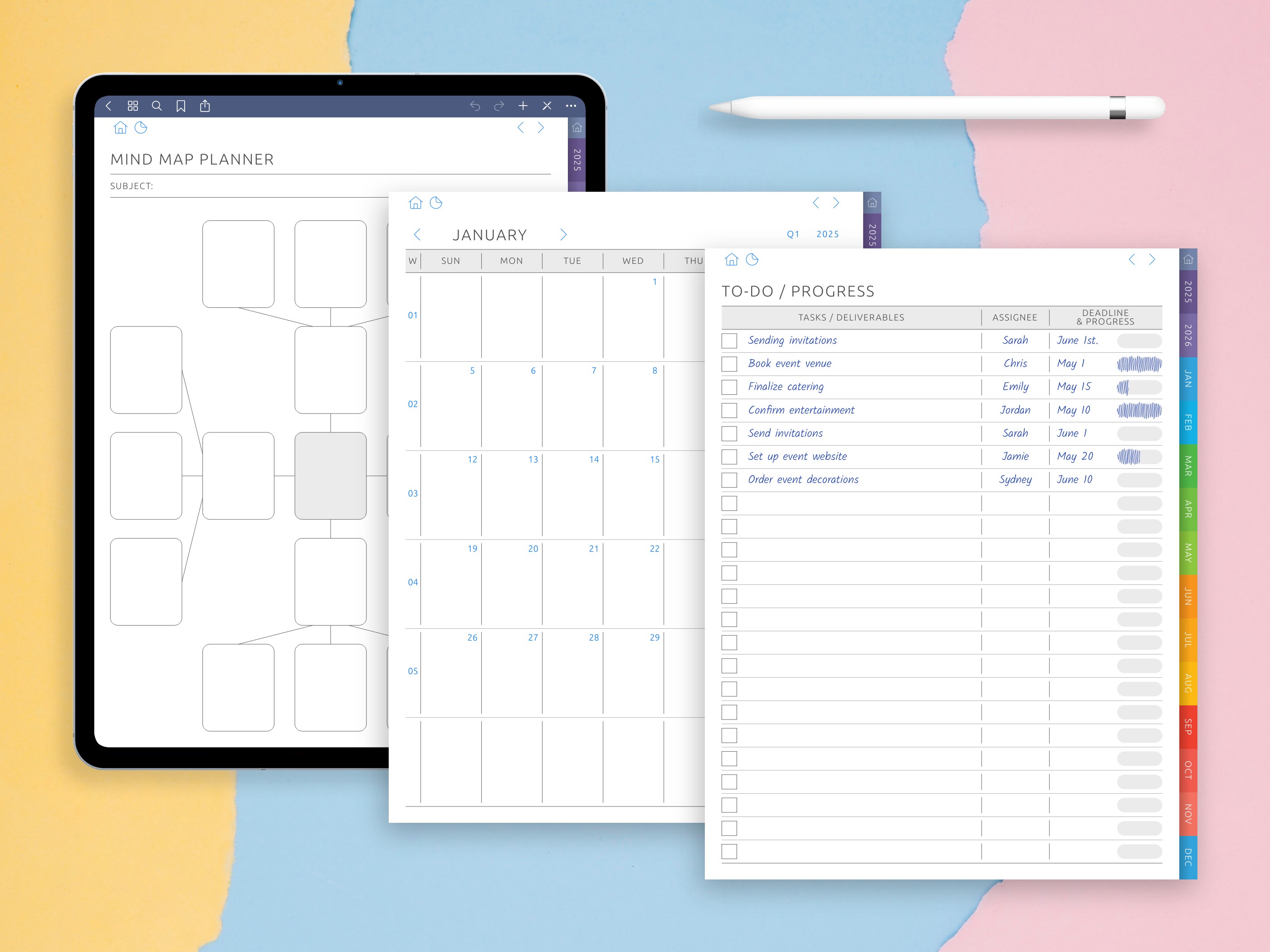
Method #7: Mind Mapping
Mind Mapping is a non-linear, creative technique akin to Mapping but more free-form. In many apps it’s labeled as “mindmap,” enabling rapid ideation with draggable nodes, icons, and attachments.
Why it works
- Engages both structure and creativity, enhancing focus and recall.
- Great for brainstorming, outlining essays, and planning projects.
Mind Mapping is one of the most effective note-taking methods for synthesizing reading into a single visual canvas before you draft.
Pros:
- Stimulates creativity and out-of-the-box thinking.
- Suitable for visualizing large projects or storylines.
- Easily adapts to digital and paper formats (mindmap applications, notebooks).
Cons:
- It can be chaotic if there is too much ideation.
Best practices:
- Limit each branch to one keyword.
- Use colors to differentiate branches.
- In pair with SMART Goal Settings Map Template
Common mistakes:
- Overloading branches with sentences.
- Not organizing subtopics clearly.
Example scenario: For a novel, map characters, plot arcs, and themes visually.
Comparison Table
| Method | Best for | Speed | Visuals | Ease of Learning | Ideal Use Case |
|---|---|---|---|---|---|
| Outline | 📚 Structured lectures | ⚡ High | 🔹 Low | 👍 Easy | 🏛 History, 🧬 Biology |
| Cornell | 🧠 Active review | ⚖ Medium | 🔸 Medium | 🙂 Medium | ⚖ Law, 🏥 Medicine |
| Boxing | 🎨 Visual learners | 🐢 Low | 🌈 High | 👍 Easy | 💼 Marketing, 🎭 Design |
| Charting | 📊 Comparisons | ⚖ Medium | 🔸 Medium | 🙂 Medium | 📜 History, 📈 Data Science |
| Mapping | 🔍 Complex relations | 🐢 Low | 🌳 High | 🙂 Medium | 🧠 Psychology, 🔧 Systems Theory |
| Zettelkasten | 📝 Research projects | 🐢 Low | 🔹 Low | 🚀 Hard | 🎓 Thesis, 📚 Publications |
| Mind Mapping | 💡 Creativity | ⚖ Medium | 🌈 High | 👍 Easy | ✍ Writing, 📅 Planning |
Legend
- Speed: ⚡ High / ⚖ Medium / 🐢 Low
- Visuals: 🔹 Low / 🔸 Medium / 🌈 High / 🌳 High (rich mapping)
- Ease of Learning: 👍 Easy / 🙂 Medium / 🚀 Hard
Printable vs Digital
Digital
- Searchable, shareable, and synced across devices is excellent for team projects and rapid revision.
- Supports multimedia (annotation on PDFs, screenshots, audio snippets).
- Great for hybrid workflows: capture in class, expand later with charts and maps.
Handwritten
- Improves concentration and memory through deeper encoding.
- Minimizes distractions, supports better focus during a fast-paced lecture.
- Use Cornell-ruled notebooks or printable templates for consistent organization.
A blended approach works for many: jot by hand for attention and retention, then switch to digital to reorganize, add annotations, and polish a one-page summary for the exam. This balance delivers high productivity without sacrificing depth. You can combine both of types, e.g., using Paper Teacher Weekly Planner for Schedule, and Sectional Digital Seating Chart.
How to Choose the Right Method for You?
Because there are many types of note taking methods, align your choice with course demands and your learning style:
- Structured subjects: Outline or Cornell.
- Visual or case-heavy subjects: Boxing or Mind Mapping.
- Data comparisons and formulas: Charting.
- Long-term research and writing: Zettelkasten.
Also consider your constraints and goals: Do you need maximum efficiency for weekly quizzes? Stronger comprehension of models? Sharper focus in class? Your answer guides you toward the best note taking method.
Not sure yet? Pilot a two-week rotation. Week 1: Outline + Cornell. Week 2: Mapping + Charting. Compare retention, recall, and time-on-task. This simple A/B test clarifies what is the best note taking method for your workflow.
From Outline and Cornell to Mapping, Charting, and Zettelkasten, there are many different note taking methods that can raise your grades and confidence. The optimal choice depends on the class format, your cognitive preferences, and deadlines. Start with one method, then hybridize: add margin annotation, build a concept map, or distill a one-page summary for last-mile revision. The result is better organization, stronger comprehension and retention, and higher productivity.
Ultimately, experimentation reveals the best note taking method for you. Use this guide to prototype a system that sustains your focus, supports active learning, and turns every lecture into a clear, actionable study asset.

